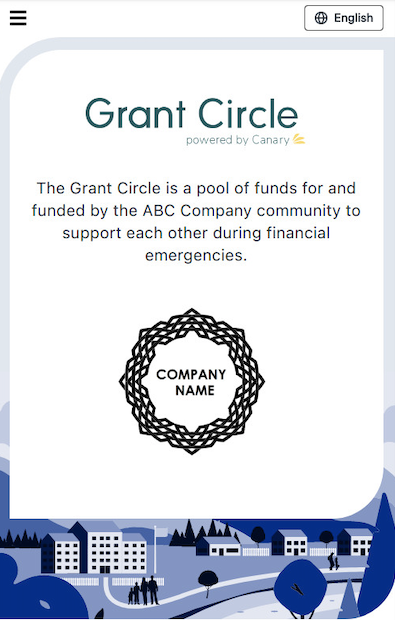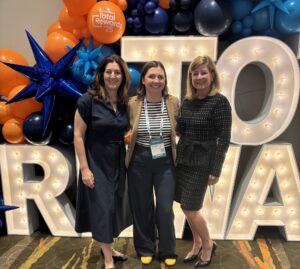Meka Este-McDonald is Canary’s Head of Product and this is the first in a series of his product-focused blog posts. You can follow Meka on Twitter or LinkedIn.
September is National Preparedness Month for natural disasters, it is an apt time to build off of the post my colleague, Catherine, wrote about the growing need for natural disaster relief funds. She previously laid out how the increasing rate of extreme weather and natural disasters is tied to an increasing rate of human impact. While the majority of Americans have access to less than 1 month of savings and limited options to financially recover from these events, and more and more people live in affected areas, this has become an extremely striking issue. She noted that employers are taking notice and that emergency relief funds can get people the right help at the right time, playing a huge role in supporting employee financial wellness.
In the past six months, we have seen some of the trends we identified in the country at large begin to play out within the community Canary serves directly. Let’s take a closer look at what we see in the adoption of Canary’s product, trends in the macro environment, and how it all impacts our product roadmap.
Natural disaster relief is becoming a key driver of growth
When an employer launches a Grant Circle, they can select the financial hardship categories they want to focus on with their employee relief fund. Recently, we have seen the natural disaster category as the sole motivator for companies. We have seen two distinct motivators behind the increased interest in natural disaster relief:
- It is important to launch a program before predictable seasonal extreme weather events began affecting subsets of employee populations.
- It is a priority for multinational companies not just to onboard their US employee base, but international hubs on different continents, particularly in the global south.
There were 20% more catastrophic events worldwide in 2021, higher than the average from the 20 previous years. Focusing on the US, 1 in 10 homes were impacted by natural disasters last year. Companies know these types of events are becoming more common, and less predictable. They should be ready to consistently and proactively support employee wellbeing, whenever the need arises.
One recent customer uses their emergency relief fund 100% on natural disasters, and we have already given out 112 grants ($73,000) on their behalf. While natural disasters remain a lower utilized category for many companies, we expect to see the overall volume to continue to increase. There may be long gaps between extreme weather events for any particular company, but when it does affect them, it often does so in a major way. For example, we have already given out 11 grants ($11,000) to people affected by the tornado that struck New Orleans in March.
Ultimately, we believe this category is becoming more important to our customers because alleviating the impact of natural disasters on employees is a by-product of the increased attention given to mitigating the impact of climate change on everyone.

Employee Relief Funds are part of the broader story of mitigating climate change
The term “climate change” may drive a lot of mixed reactions, but it’s undeniable that global society, and US society, in particular, is increasingly aware of and concerned with the topic. Congress recently passed a bill that invests $369B into reducing greenhouse gas emissions, the largest investment in climate change in US history. The richest man in the world today derives the majority of his wealth from Tesla, a company aimed at moving the car industry away from fossil fuels. Texas has gone from worrying if its energy grid could function in temperatures much colder than it was built to handle, to now dealing with power shortages driven by unpredictably high temperatures.
Everywhere you look, there are conversations about mitigating climate change itself or the effects of unpredictably extreme weather. But the existence of organizations like Carbon 180 (an NGO focused on removing carbon from the atmosphere rather than simply stopping it from getting there) are particularly telling, because it shows the growing thought that mitigation won’t be enough. The metaphor they use is that we must drain the tub, not simply turn down the faucet. We can fix our power lines in California, and improve our grids in Texas, but we have a long way to go before we can expect to find a new equilibrium with our planet. And, along that long and winding path, there are going to be a lot more financially unstable people, already walking on a tightrope, who are in danger of falling off in the economic shock of a natural disaster.
Not just in the US but across the world, a lot of people will need natural disaster relief before it’s all said and done.

Preparing our product
While we have done a lot of amazing technical work recently, we recognize the opportunity to optimize our product’s natural disaster category in anticipation of these worldwide changes. In the coming couple months, we expect to address that in the following ways:
- Rebuild our request engine so the natural disaster category has fewer and different steps than other categories within the same company. It sounds simple, but we didn’t initially build for that axis of configurability.
- Minimize the number of steps involved in requesting a grant as much as possible. When something this traumatic happens to you, the last thing you want to do is jump through hoops to get the help you need. We want to be empathetic to that.
- Make the eligibility check when a grant seeker logs in work like magic. We should know then and there what natural disasters, if any, an employee is eligible to apply for.
- Recommend our employers set standard amounts to give to affected employees. If we can avoid it, it is not the right time to ask people to put a price on their experience.
- Turn this category into a fully automated review process, so people get their relief as quickly as possible. The capacity of our human grant administrators should not be a bottleneck, especially internationally and in these types of crises.
We envision a reality where, if all the companies in the world asked Canary to administer a natural disaster relief fund to bolster their employees’ financial wellness, we could say yes. Not get in line, or wait for us to staff up. Simply – yes.






